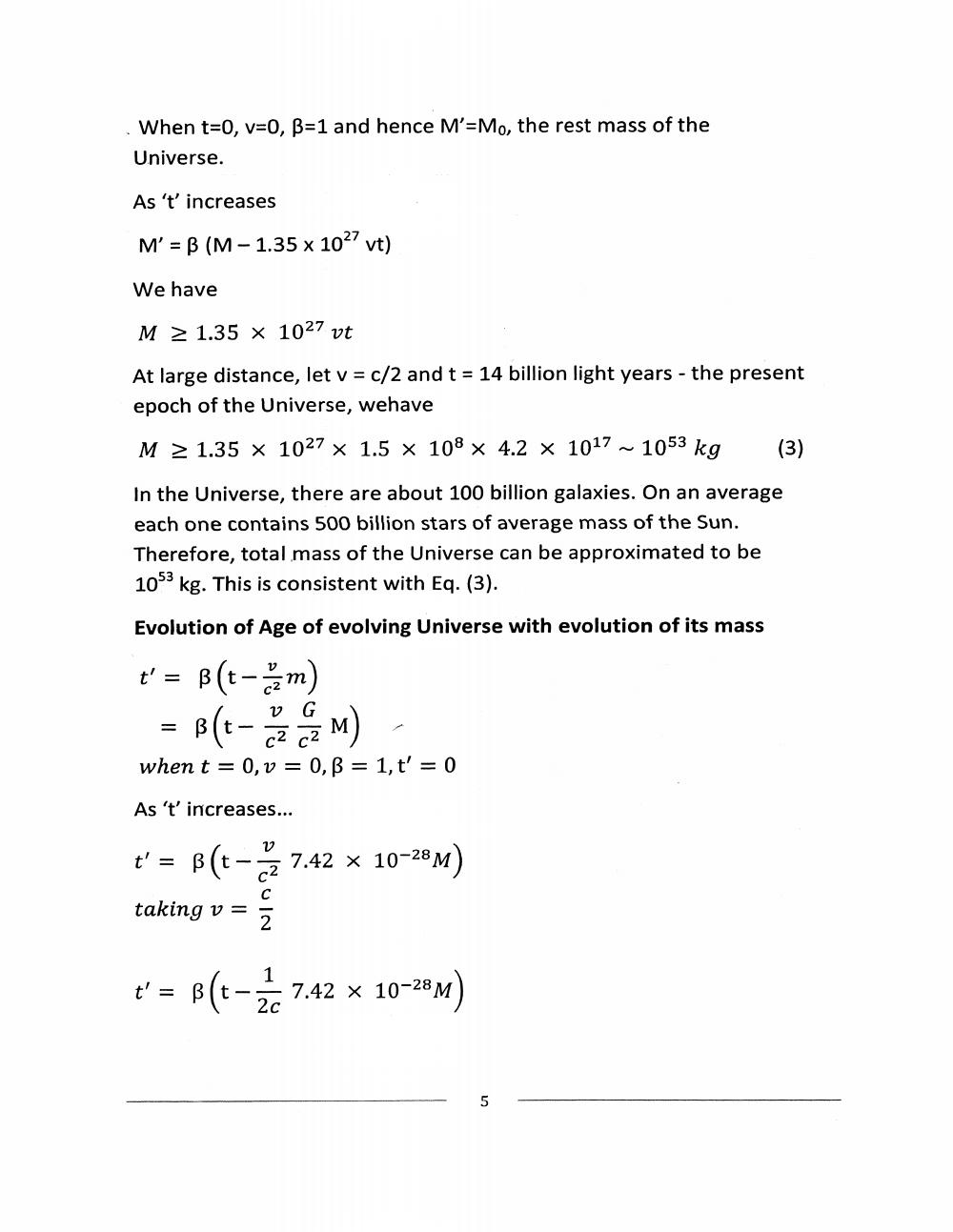Book Title: Nature of Universe Author(s): J J Rawal Publisher: J J Rawal View full book textPage 5
________________ When t=0, v=0, B=1 and hence M'=Mo, the rest mass of the Universe. As 't' increases M' = B (M – 1.35 x 1027 vt) We have M 2 1.35 X 1027 vt At large distance, let v = c/2 and t = 14 billion light years - the present epoch of the Universe, wehave M > 1.35 x 1027 x 1.5 x 108 x 4.2 x 1017 ~ 1053 kg (3) In the Universe, there are about 100 billion galaxies. On an average each one contains 500 billion stars of average mass of the Sun. Therefore, total mass of the Universe can be approximated to be 105 kg. This is consistent with Eq. (3). Evolution of Age of evolving Universe with evolution of its mass t' = B( tm) = B(t- M)when t = 0,v = 0,ß = 1,t' = 0 As 't' increases... t' = B(t- 7.42 10-28M) taking v = { t' = B(t-ze 7.42 x 10-20 M)Page Navigation
1 ... 3 4 5 6 7 8 9 10 11 12
